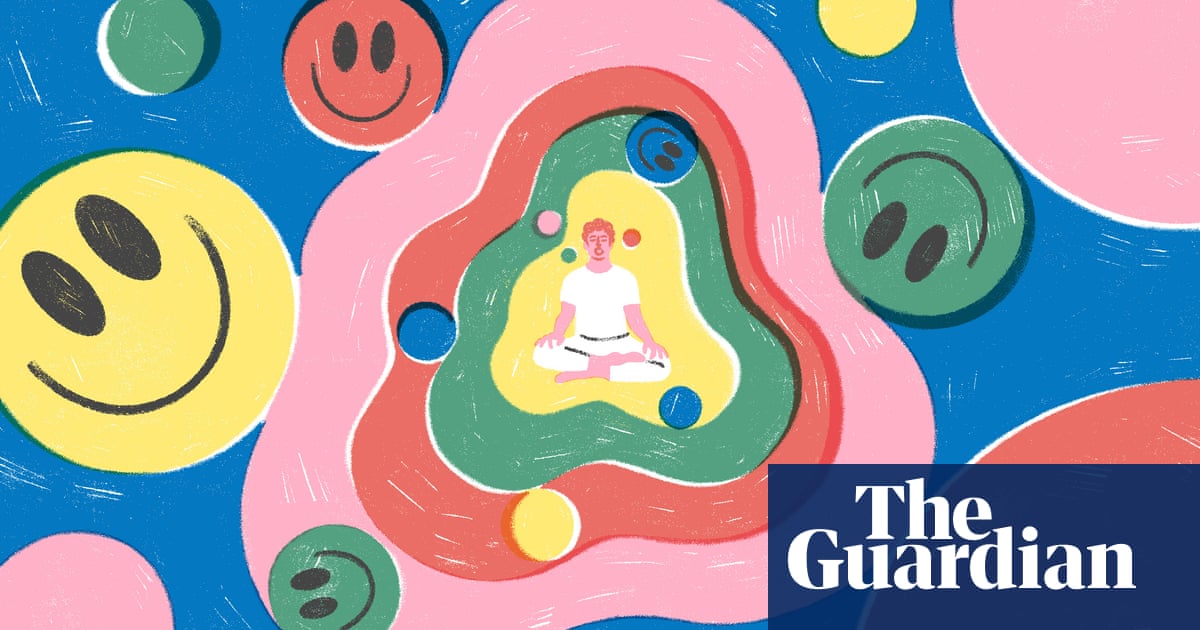
The promise of breathwork is appealingly simple: that the key to physical health, inner peace, improved performance and self-actualization is something we are already doing roughly 20,000 times a day. According to its adherents – which include Simone Biles, Michael Phelps, Gisele Bundchen, and a woman I met at a party last weekend – by manipulating your breath, you can better regulate your mind and body.
But what kind of breathing technique works best? I’ve heard breathwork can give me a psychedelic trip – is that true? And if breathing exercises can help us feel better, why aren’t we all doing them all the time?
What is breathwork?
“Breathwork is any type of regulation of breathing,” says Dr Sundar Balasubramanian, a researcher at the Medical University of South Carolina, and founder of the company PranaScience.
As Balasubramanian notes, breathwork has been around for thousands of years, and cultures across the globe developed their own practices: Chinese Qigong, Hawaiian piko piko, Indian yogic breathing, also known as pranayama. Over the years, more techniques have emerged, like holotropic breathwork, box breathing, Buteyko breathing and the Wim Hof method (developed by the Dutch motivational speaker Wim Hof, also known as the “Iceman,” who Justin Bieber once described as “a G”). These methods vary in intensity, speed and outcome. Are you trying to feel more energized? More relaxed? Is this exercise spiritual or are you just trying to calm your nerves?
“I always think [breathing techniques] are like varieties of chocolate,” says Balasubramanian. “There are so many different types.”
When it comes to choosing one, he says it depends on how you feel and what you’re trying to achieve in a given moment. If your nose is runny, for example, maybe skip alternate nostril breathing. If you want to feel energized, try an exercise with shorter, sharper breaths, and if you want to feel calm, try one with longer, deeper breaths.
How does breathing affect our health and wellbeing?
Firstly and most importantly: our breath keeps us alive.
Beyond that, slowing the rate of our breathing to roughly six breaths a minute can have numerous physical and mental health benefits, explains Dr Alessandro Colasanti, a reader in psychiatry at Brighton and Sussex Medical School, and consultant psychiatrist at Sussex Partnership NHS Foundation Trust. “These effects include relaxation, wellbeing, reduction of stress.”
Balasubramanian adds that by fully expanding our diaphragms on inhales and exhales, we can improve blood circulation in the body. “Most of the problems in terms of how tissues start deteriorating with age are because of a lack of proper circulation,” he explains, “This is easily changeable by your breathing.”
What does breathwork feel like?
One Wednesday afternoon, I joined over 200 other participants in Sylvie Horvath’s Zoom breathwork class. Horvath is a yoga instructor, breathwork facilitator and founder of the company Soul Dimension. She started teaching weekly free breathwork classes on Zoom during the pandemic and attendance quickly grew. “I wasn’t sure how it would work online,” she said on a call later that week. “But I found that you can really get into it. You can feel the energy, even online.”
I was in a bad mood when I started the class, which seemed perfect. What better way to see if breathwork helps one feel good? Horvath took us through three cycles of breathing in which we inhaled and exhaled through our mouths 40 times. This, she said, would manipulate the oxygen levels in the blood – oxygen levels would go up, carbon dioxide levels would go down. “You could feel hot. You could feel cold. You could feel emotions,” she said. At the end of each cycle, we held our breaths on an exhale for one minute, though she added: “If you need to breathe in sooner, you can.”
During the first round, I found the sensation of breathing through my mouth unpleasant – my mouth and lips felt cold and dry – and holding my breath on an exhale made me tense with panic and I had to inhale deeply long before the minute was over.
As class went on, I got used to the open mouth breathing. I held my breath longer each cycle. At the end, I felt pleasantly woozy. My thoughts and movements felt slow, like I was floating through water. I wasn’t in a bad mood anymore. I scanned through the comments to see how other participants were feeling. “I really felt a tingling sensation and I cried,” someone had typed.
Can breathwork really make you feel “high”?
A recent New York Times story looked into the potential therapeutic applications of holotropic breathwork, an exercise that can transport practitioners into an “altered state of consciousness”.
I couldn’t help but be curious about this more transformative experience. Over the next few days, I sought out practices that were trippy (but also free). I found a breathwork video on YouTube that promised a “NATURAL HIGH” but just made the inside of my nose feel cold. The free meditation app on my phone offered a pranayama practice that promised a “transcendental experience” but just made my arms and legs twitch and left me with a bit of a headache.
Can a person really have a psychedelic experience from breathwork though?
“Some elements of it,” says Colasanti. He says studies have shown that certain fast-paced techniques have yielded results similar to psychedelic experiences, “particularly with regards to feelings of living in a mystical experience, being in a dreamful or blissful state, and feeling that the self and the surrounding were blurred”. As to why this happens, Colasanti says: “Short answer: we don’t know yet, but we are investigating it.”
Is there anyone who shouldn’t do breathwork?
Though everyone breathes, intense breathwork exercises aren’t for everyone. Because breathwork can constrict or expand blood vessels, Balasubramanian urges individuals who have had strokes or who have cardiovascular issues to proceed with caution, and to only do breathing exercises offered by individuals trained to deal with those conditions.
Horvath also warns that individuals with chronic obstructive pulmonary disease (COPD) or asthma, or those who are pregnant should talk to a doctor before doing specific breathwork practices.
Trauma survivors should also tread carefully when it comes to breathwork, as some might not feel comfortable focusing on physical sensations. In these cases, it’s best to start slowly, or focus on finding other coping strategies, ideally with the help of a professional.
What’s the best way to start with breathwork?
As with any new practice, experts recommend starting slow.
“First, just become aware of how you’re breathing throughout the day,” says Guy Fincham, a breathwork researcher at the University of Sussex. From there, he suggests switching to nose breathing a majority of the time if you’re not already doing so, and then trying slow paced practices like box breathing (where you inhale for a count of four, hold for a count of four, exhale for a count of four, hold for a count of four, and repeat) or coherent breathing (where you inhale for a count of six and exhale for a count of six). Techniques that involve hyperventilation, he warned, should always be undertaken in a safe environment, meaning a space where one can lay down safely and comfortably, away from water and hard surfaces.
How often should you do breathwork?
As for how often you should do breathwork, generally some is better than none, says Balasubramanian, though he cautions: “This is true for slow breathing exercises.” Meditative exercises, he says, can be done for longer because they are slow, but fast breathing hyperventilation exercises should be done carefully and with plenty of intermittent rest.
The traditional, slow pranayama practice, Balasubramanian explains, involves 24 minutes of breathing in the morning, afternoon and evening. But he recognizes that might be a lot to start with. “Even five minutes of some breathing exercises before each meal is good enough to cause some change.”
BOTTOM LINE
How much did it cost? $0.
Did it work? Sadly, I did not have a psychedelic trip, but I did generally feel more relaxed after my breathing sessions.
Would I do it again? Yes.
Did it fix me? Tiny, easily surmountable inconveniences can still send me into paroxysms of rage at any point, but several times a day I will try to take a few slow, deep breaths into my stomach, and that often helps a little.
Overall rating: Four (inhales) out of five (exhales).












